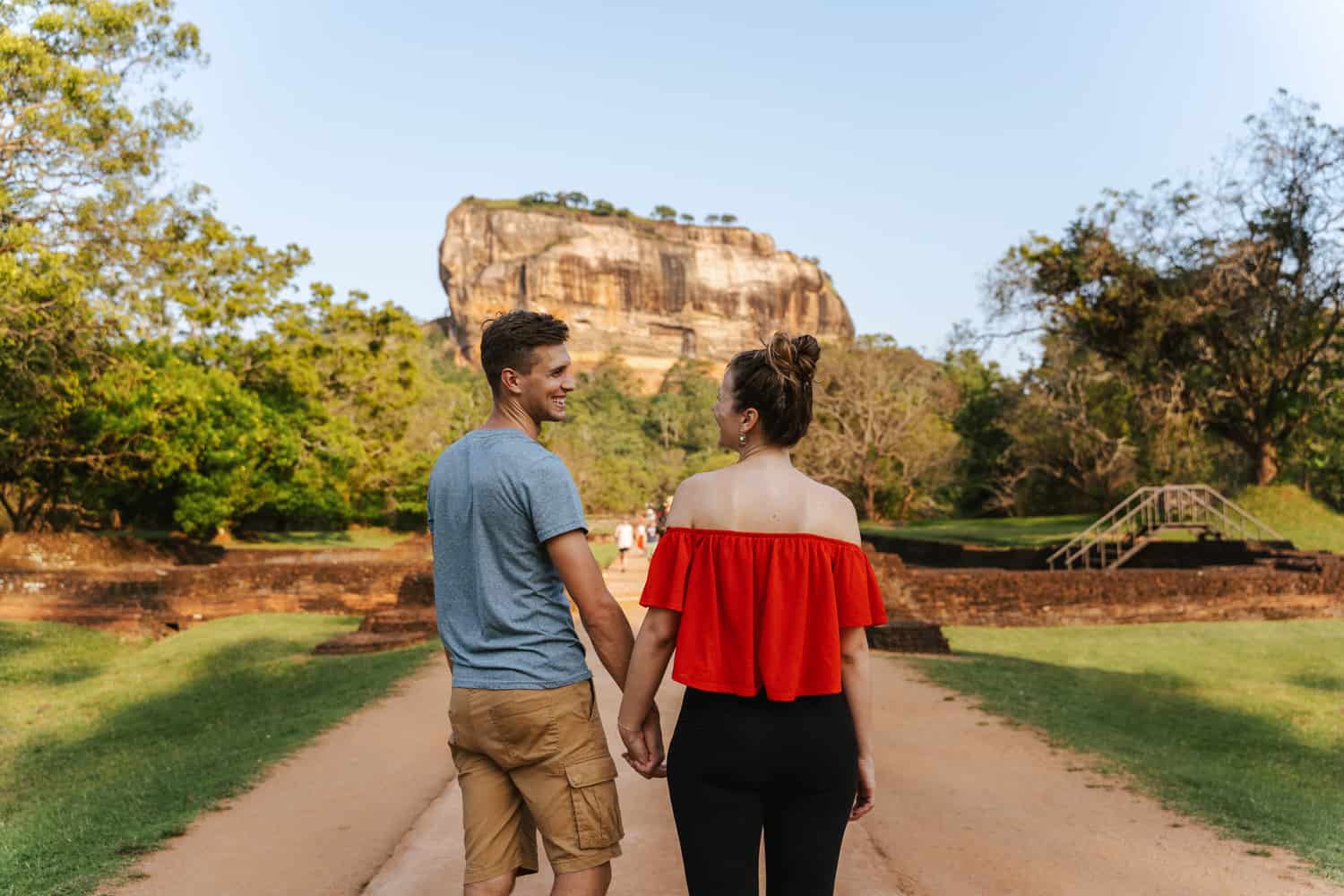Sigiriya is quite a popular destination among tourists who visit Sri Lanka. Even though it is frequently associated with the Sigiriya rock fortress, there are so many other things that you can enjoy there.
It is a very central location for most of the tourist attractions in the cultural triangle of Sri Lanka. In our travel agency, we often arrange 2 to 4 night stays in Sigiriya, so our guests can enjoy their holiday without the hassle of changing hotels regularly.
If you are wondering what could possibly keep you busy for four days in Sigiriya, here is a comprehensive list of things that you can enjoy while you are in Sigiriya.
Things to do in Sigiriya
Note – Sigiriya, Dambulla and Habarana are locations that are situated very close to each other. If you cannot find accommodations in Sigiriya, you may book a hotel in Dambulla or Habarana and enjoy all the below excursions.
1. Sigiriya Rock Fortress
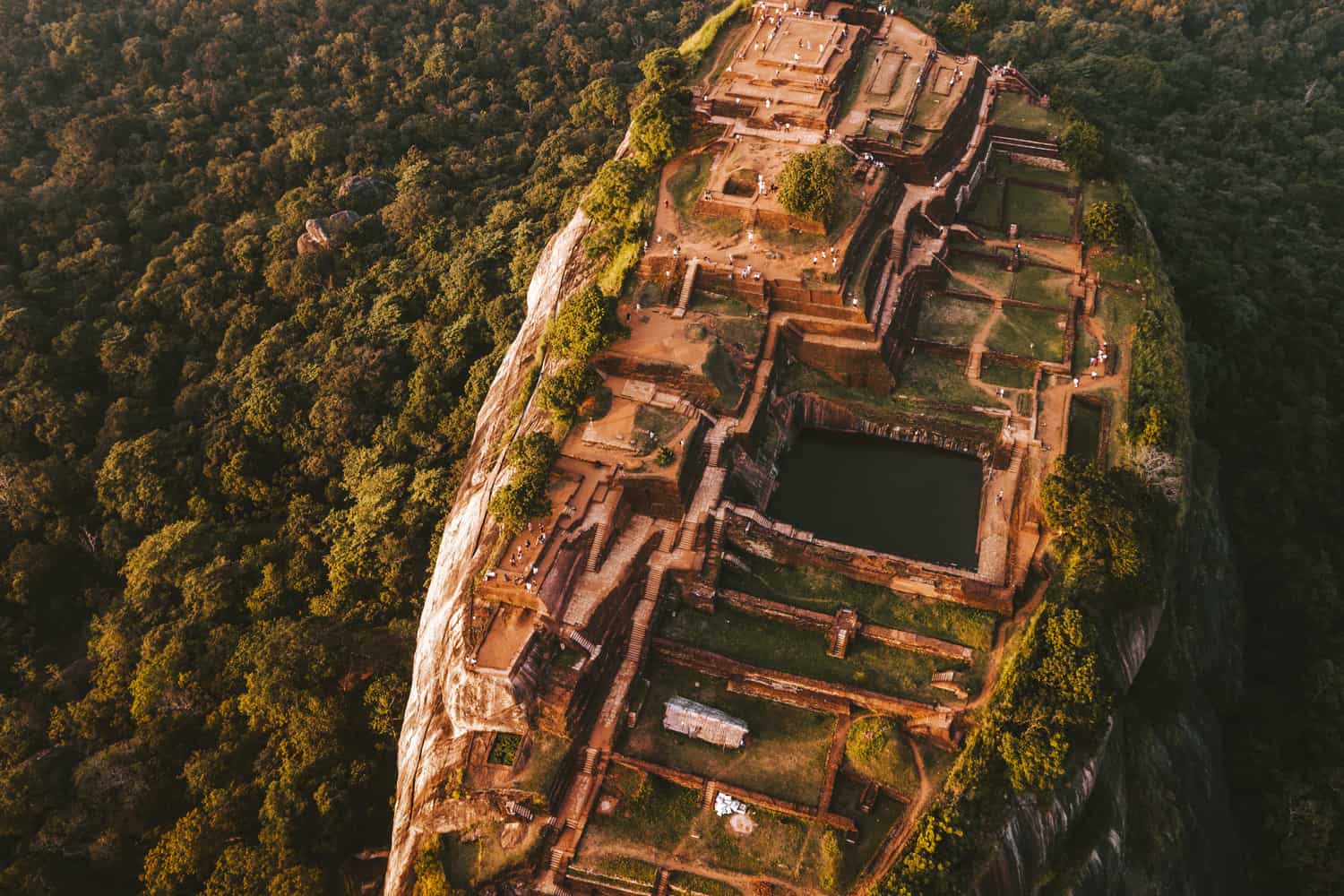
Sigiriya is one of the most popular ancient citadels in the world. It is locally known as the 8th wonder of the world, and it is not hard to see why.
When you witness the impressive rock buildings, beautifully designed ancient gardens, amazing frescos and still functioning water fountains you cannot help wondering how they managed to achieve such great heights in the 5th century BCE.
If you are visiting Sigiriya, try to be there by 7.00 am, so you can enjoy the site when the sun is mild and the site is not packed with tourists. I highly recommend hiring a guide for the Sigiriya Rock Fortress, so you can learn its origin story. A brief version of it is as follows.
King Dhatusena had two sons, Kashyapa and Moggallana. The rightful heir to the throne was Moggallana, but Kashyapa managed to seize the throne, overthrowing his father with the help of the king's army commander. Moggalana fled to India after this incident fearing for his life, but Kashyapa knew his brother would return seeking revenge.
In order to face any attacks from Moggallana, king Kashyapa moved the capital from Anuradhapura to Sigiriya and built this miraculous fortress. However, Kashyapa lost the battle when Moggallana attacked his fortress, prompting Kashyapa to take his own life.
According to historians, after the battle the fortress was converted into a monastery. Eventually, it was abandoned by the clergy due to foreign invasions.
Pro tip - If you do not have enough time to spend a few days in Sigiriya, you may visit Sigiriya Rock Fortress as a day tour from Kandy.
2. Dambulla Cave Temple
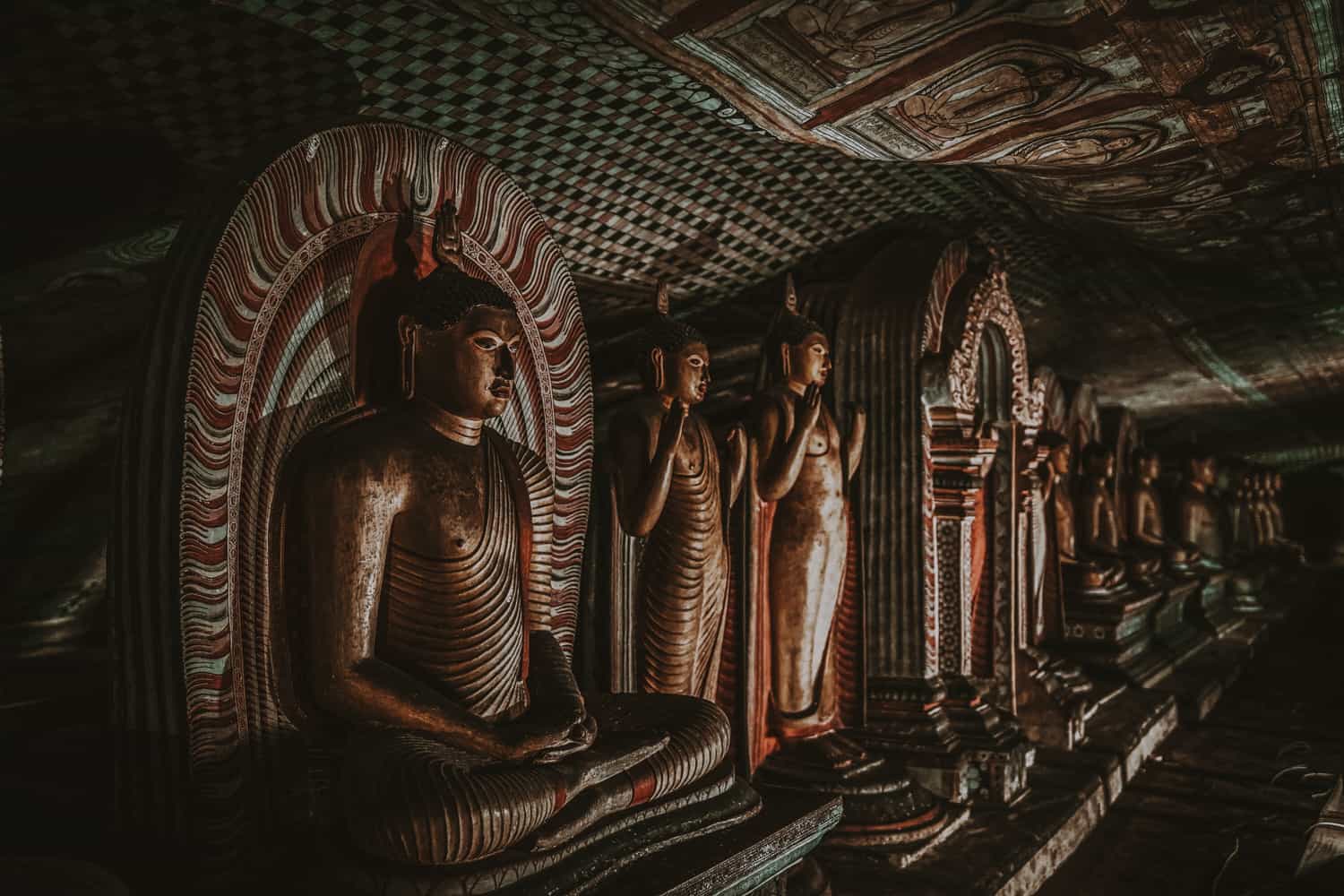
Dambulla Cave Temple is an ancient Buddhist temple located just 30 minutes away from Sigiriya. This UNESCO listed world heritage site is considered as the largest and the best preserved cave temple complex in Sri Lanka.
King Valagamba of Anuradhapura is traditionally known to have converted the caves into a temple in the 1st century BCE. He had done so to show his gratitude to the monks who helped him take refuge in these caves throughout his 14 years long exile as he was hiding from South Indian invaders.
If you visit Dambulla Cave Temple, you will be able to enjoy its ancient murals and the elaborate statues. There are a total of 157 statues in Dambulla Cave Temple. Out of those 157 statues, 153 of them are Buddha statues. The rest of the statues represent goddesses and Sri Lankan kings.
You have to climb 364 steps to reach the Dambulla Cave Temple. However, that is nothing compared to the 1200 steps in Sigiriya Rock Fortress.
3. Minneriya National Park
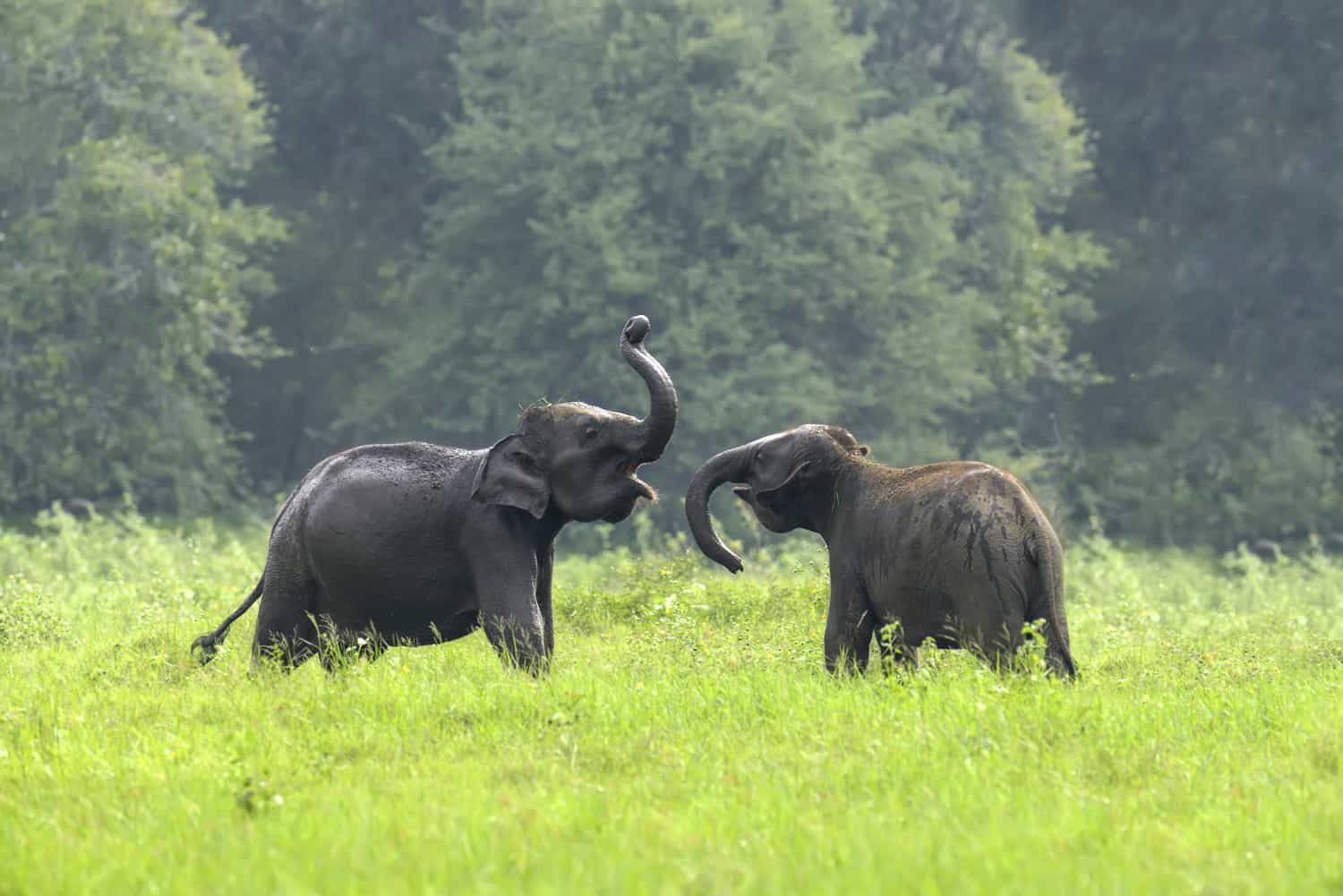
It is a crime leaving Sri Lanka without enjoying a jeep safari. If you are interested taking a wildlife safari while you are in Sigiriya, Minneriya national park is your best bet.
It is s a great place to see deer, crocodiles, monkeys, wild boars, and peacocks. However, the biggest attraction of the national park is its elephants. Particularly during the period July to September hundreds and hundreds of elephants can be seen in Minneriya National Park.
As it is the dry season in the region, elephants from many other regions gather around the lake of Minneriya national park for water and tender grass which emerge from the reservoir as it evaporates.
Pro tip - An alternative national park to Minneriya national park is Udawalawe national park.
4. Village tour in Sigiriya
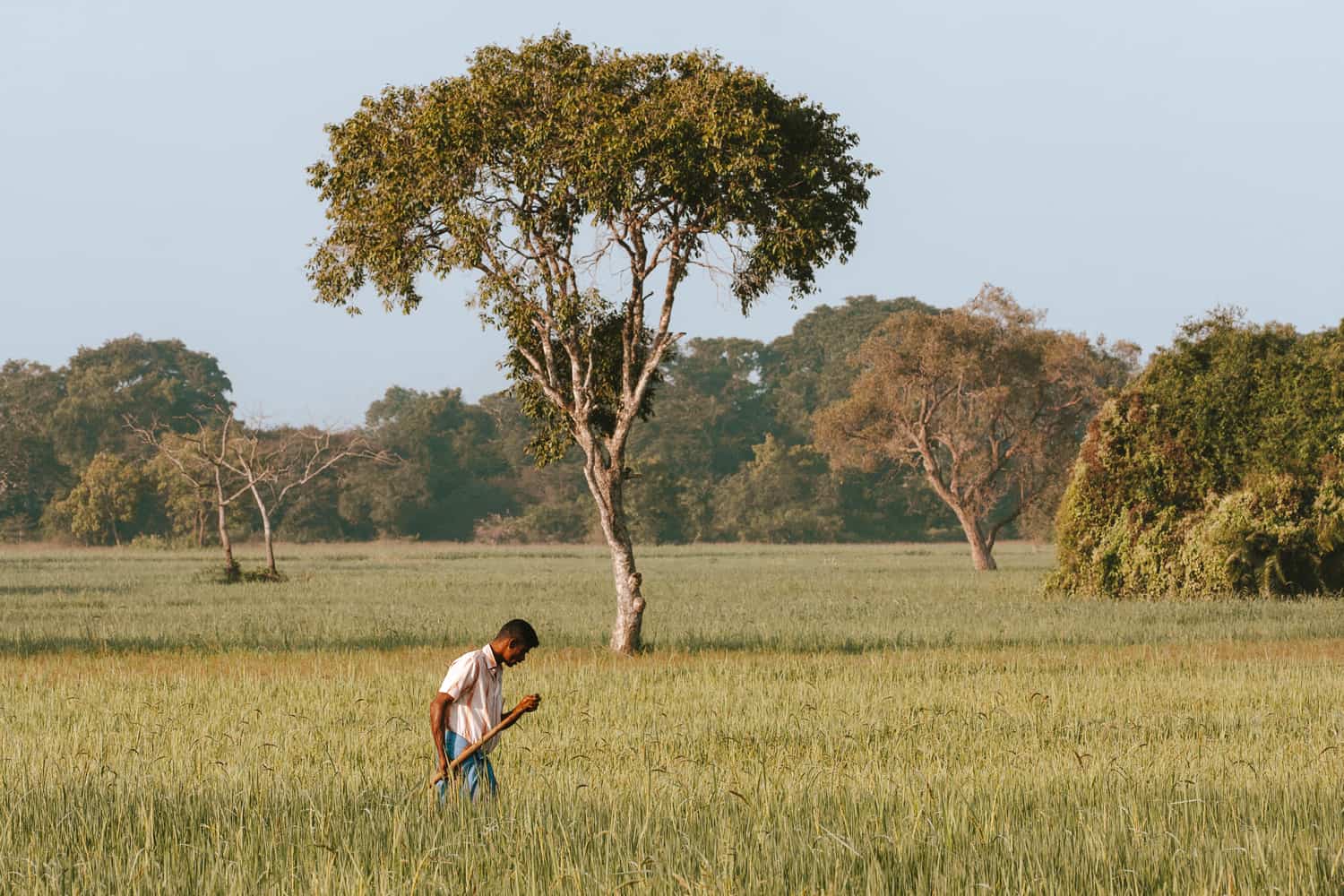
Thanks to the tourism industry there are some improvements in the living standards of Sigiriya, however, it is still a less developed rural area.
Most of the locals in Sigiriya are hardworking farmers. Their life is simple and less chaotic. If you would like to have a glimpse of their world, take a village tour while you are in Sigiriya.
Depending on which tour operator that you use for your village tour, the experience can be slightly different. In general, these tours include a bullock cart ride, a catamaran ride and a traditional Sri Lankan meal at the home of your host.
5. Pidurangala Rock
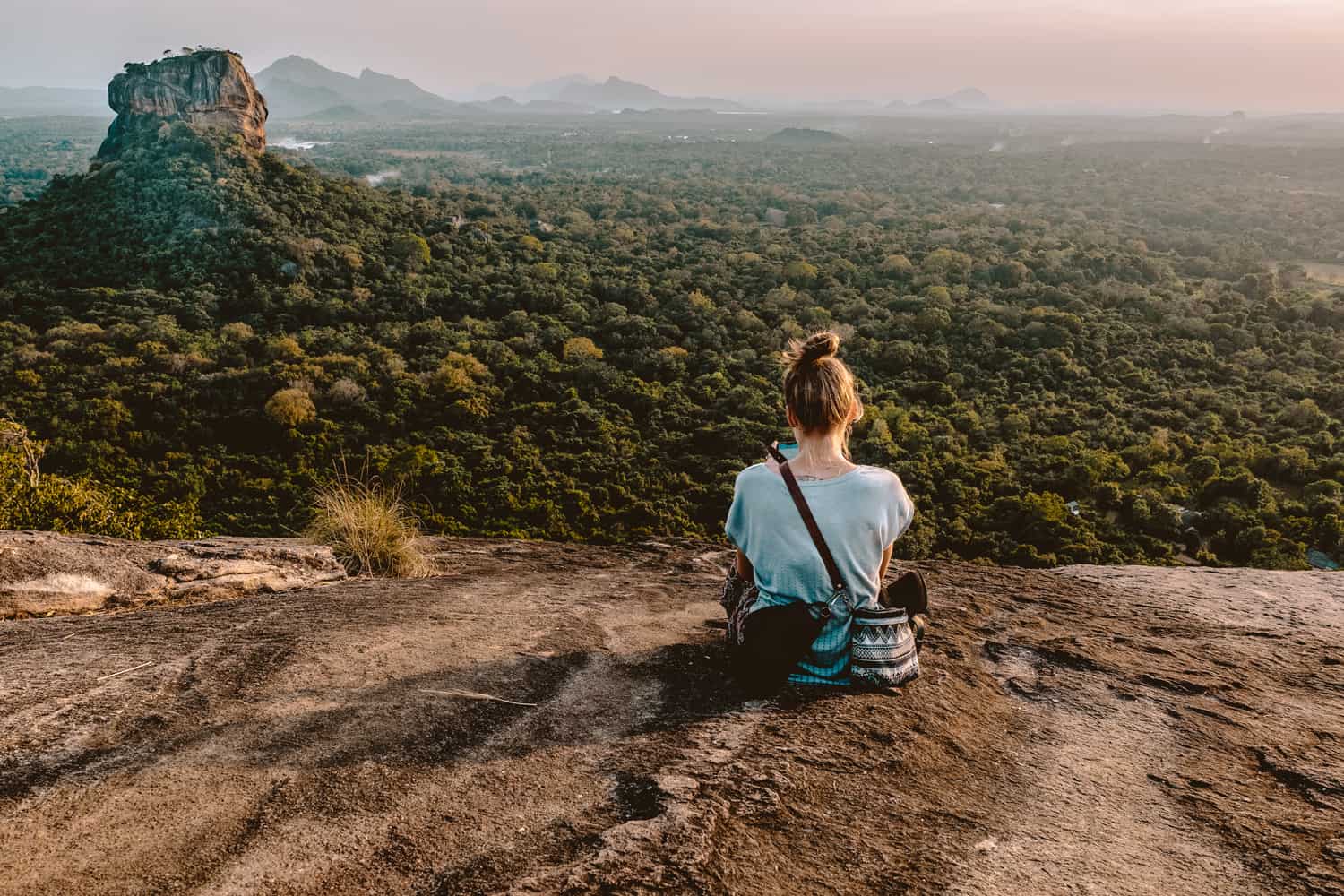
If you are a person who enjoys somewhat challenging hikes, Pidurangala might interest you. It is situated only a few kilometers north from Sigiriya and offers a splendid view of the Sigiriya Rock Fortress.
There is a temple at the starting point of the trek. It is believed this temple was built by King Kashyapa for the monks who had settled around Sigiriya before his arrival.
Remains of the monastery can still be seen on your way to the summit. There is a reclining statue of Lord Buddha which stretches over 12.5 meters.
Climbing Pidurangala to enjoy the sunrise or sunset is highly recommended. Usually, the sun rises in Pidurangala at around 6.00 am and sunsets are around 6.00 pm. Since the Pidurangala trekking takes about 1 hour, start climbing the rock 1 hour before the sunrise or sunset.
6. Ritigala forest monastery
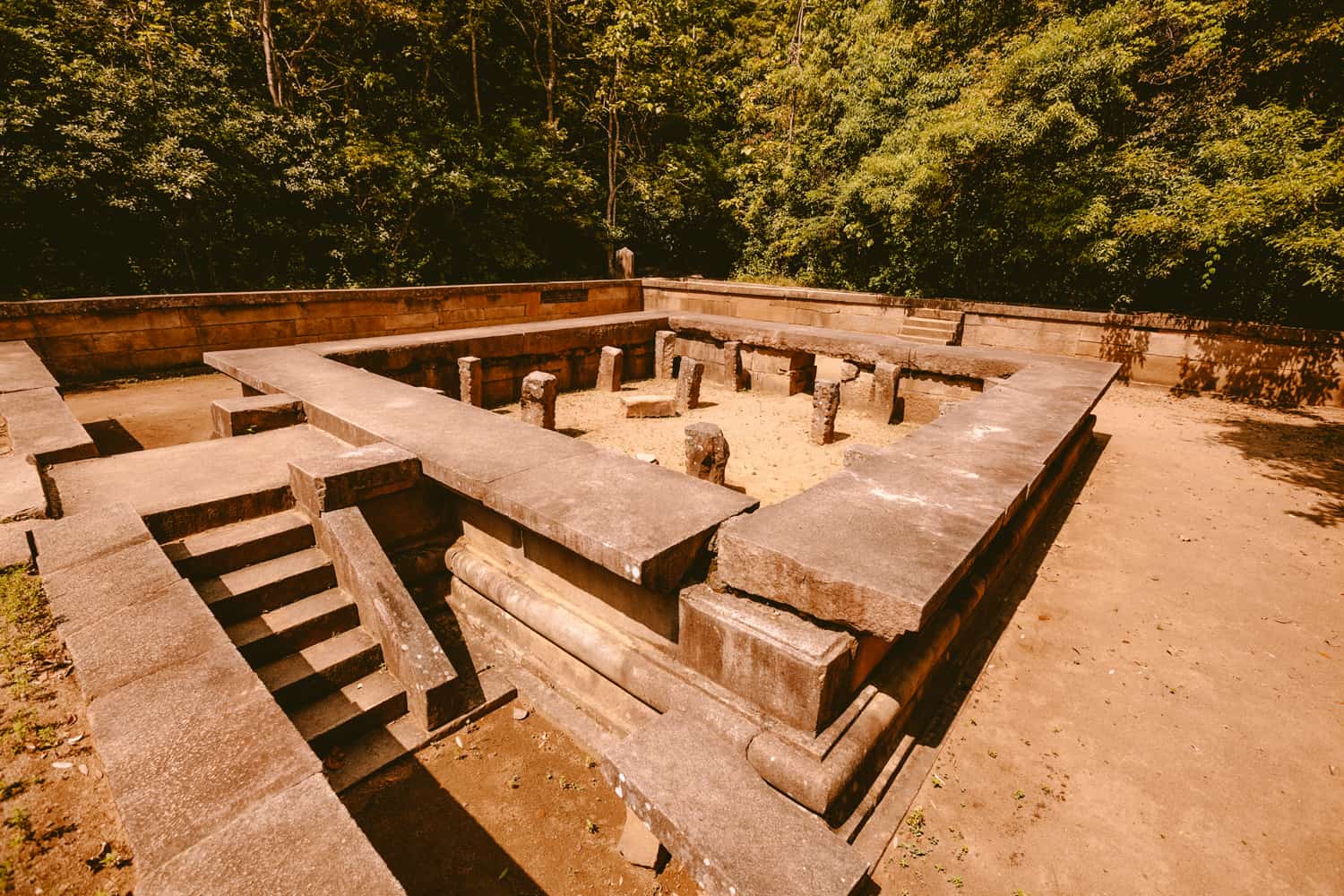
The area surrounding Sigiriya is sprinkled with rocks that have immense historical value and their own stories to tell. Ritigala is one such place.
It is believed Ritigala forest was inhabited by enlightened monks led by Aritta Thero in 3rd century BC. Aritta Thero is the first ever ordained monk in Sri Lanka. The area was a monastery for Buddhist monks for 1300 years.
The most significant improvements to the monastery were made in 832 AD by the king named First Sena. He developed the monastery by adding 142 buildings over the course of 20 years.
These buildings were destroyed by Chola invaders in 1100 AD. However, you can still witness their ruins that are spread around an area of 1.5 km.
These ruins include the largest man-made pond in Sri Lanka, hospitals, libraries, study rooms, washrooms and more.
There are also quite a few legends around the Ritigala mountain range such as Mahasona’s story and Hanuman’s story. A tour with a local guide will give you the opportunity to listen to these fables.
Note – It can be a bit challenging hiking through Ritigala woods with young kids. The ideal age for this excursion is 10 years old and above.
7. Day tour to Anuradhapura
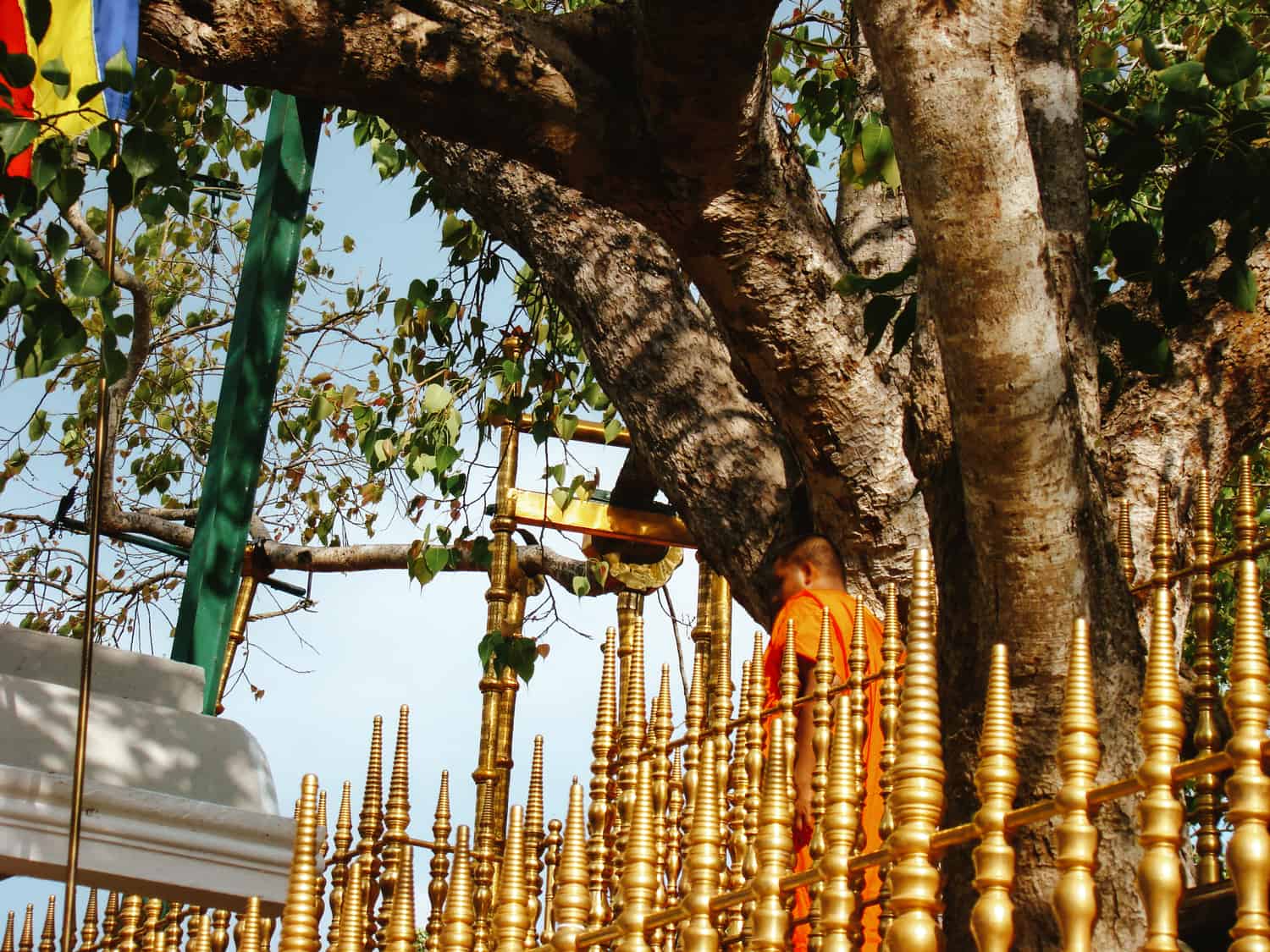
The city of Anuradhapura had been the pivotal point during the dawn of Buddhism in Sri Lanka. Therefore, it is richer in sacred monuments than any other location in the country. Not only that, the UNESCO listed world heritage site Anuradhapura is the first known kingdom of Sri Lankan kings (377 BC–1017 AD).
The whole city is centered around the Sacred Jaya Sri Maha Bodhi, which is a branch from Lord Buddha’s tree of enlightenment. Within walking distance is the glorious standing white stupa, Ruwanweliseya, which is living evidence of the great architectural prowess of ancient Sri Lankans.
Other key attractions of Anuradhapuraya are Jetavanaramaya, Isurumuniya, Mirisawetiya, Kuttam Pokuna (Twin Ponds), Thuparamaya, and Samadhi Buddha Statue.
You will need at least half a day to fully cover this ancient city. Be sure to hire a guide for this site, as you would not want to miss the fascinating stories behind these amazing historical monuments.
Note – If you like, there is an opportunity to tour Anuradhapura ancient site by bicycle.
8. Day tour to Polonnaruwa
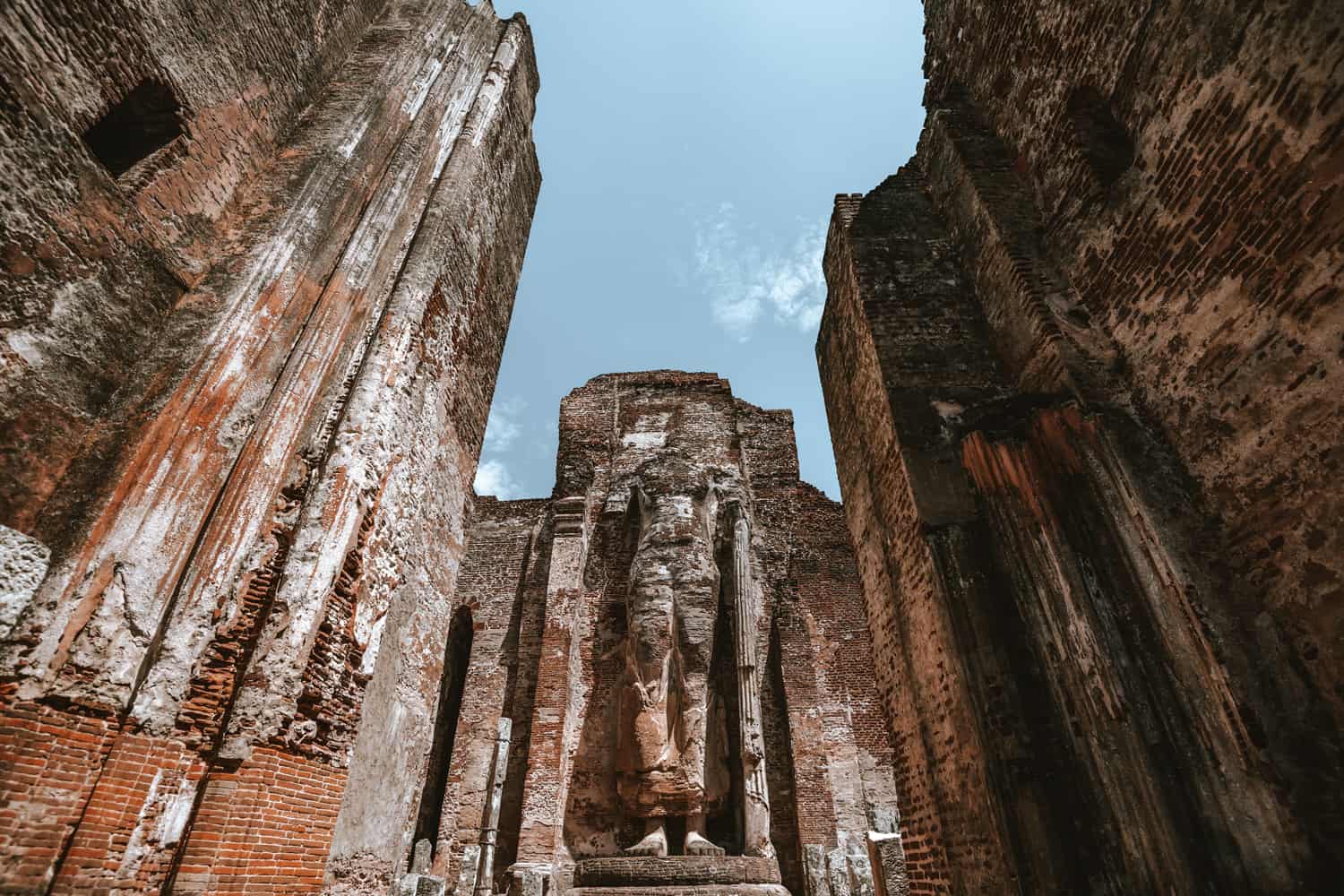
I mentioned earlier Anuradhapura is the first kingdom of Sri Lankan kings. The second oldest kingdom of Sri Lanka is Polonnaruwa, which is also a UNESCO listed world heritage site.
It was not a Sinhalese king who shifted the capital from Anuradhpura to Polonnaruwa. It was the Chola invaders who shifted the capital to Polonnaruwa after capturing the last king of Anuradhapura, Mahinda V. During their time Polonnaruwa was named as Jananathapuram.
King Vijayabahu I is the first Sinhalese king to rule Polonnaruwa. He managed to chase away the chola invaders who ruled Polonnaruwa (Jananathapuram) for 53 years.
The kingdom reached its apex of cultural and economic prosperity during the reign of King Parakramabahu I. The evidence of such opulence still can be seen in the ruins of soaring walls of the Royal Palace and huge tanks such as Parakrama Samudra. He is believed to have built around 200 lakes during his time. These lakes had been helpful in making the country self-sufficient in food production and it had been called the ‘Granary of East” during this period.
A few popular spots in Polonnaruwa which deserve to be in your bucket list are Gal Vihare (Stone temple), The Quadrangle, Lankatilake, Rankoth Vihare, Thivanka Image house, and Vatadage. These are all situated in close proximity to each other.
Similar to the Anuradhapura ancient site, Polonnaruwa is best to visit with a local guide to learn its historical importance.
9. Aukana Temple
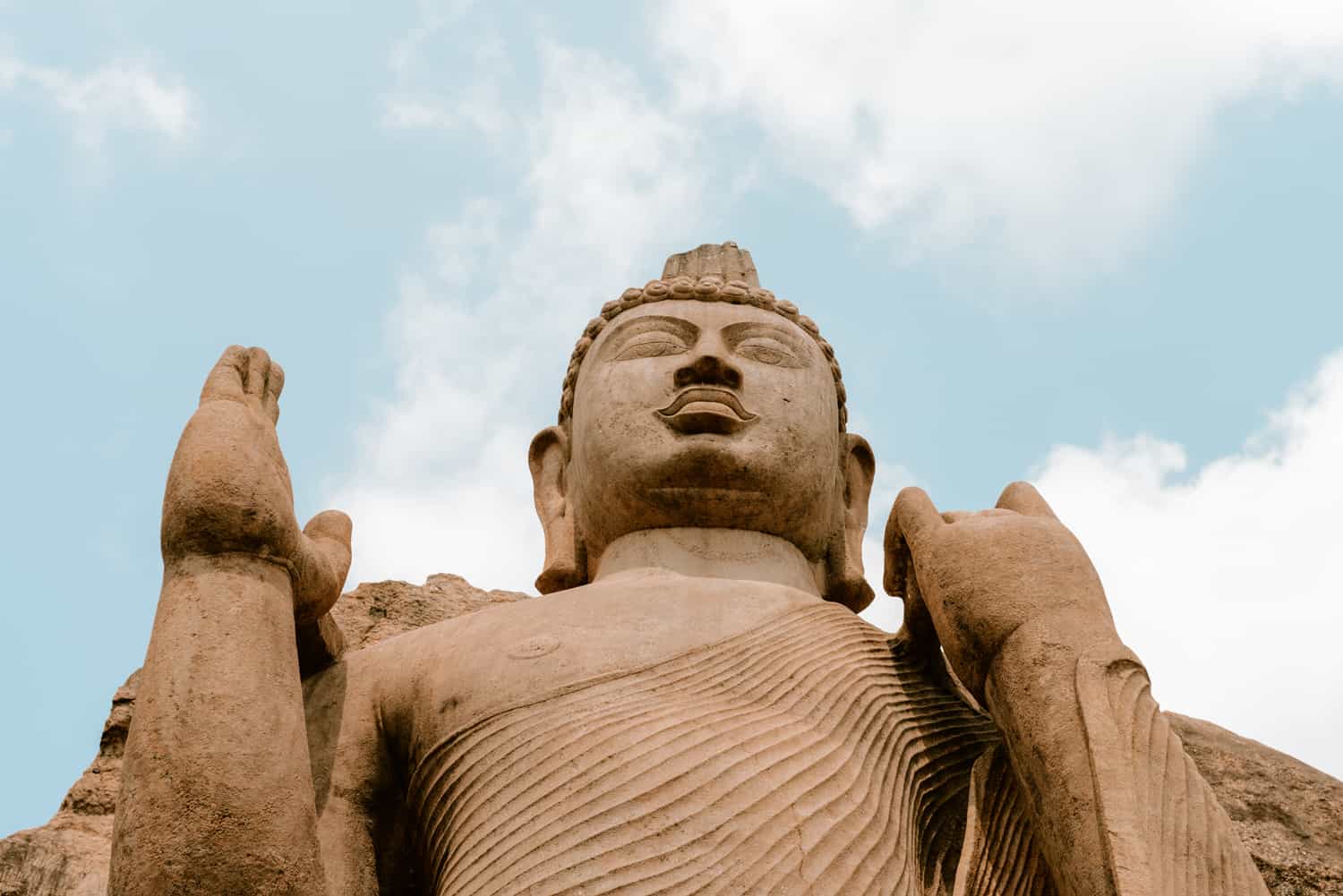
Aukana temple is mostly known for its towering, serene statue of Lord Buddha. The statue is carved intricately into a huge, single stone. Somewhat similar to Bamiyan Statues which were destroyed in Afghanistan.
The statue was built in the 5th century BC by King Datusena (King Kashyapa’s father). It rises over 40 feet in height. Kalawewa, which adjoins the Aukana Statue, was also built by the same king. The two are taken as one entity in historical scripts.
The accuracy with which the statue was constructed adds to its uniqueness. It is locally believed that a droplet of rainwater which slides off the nose falls directly into a cavity located in the space between the statue’s two feet.
10. Hot air ballooning in Sigiriya
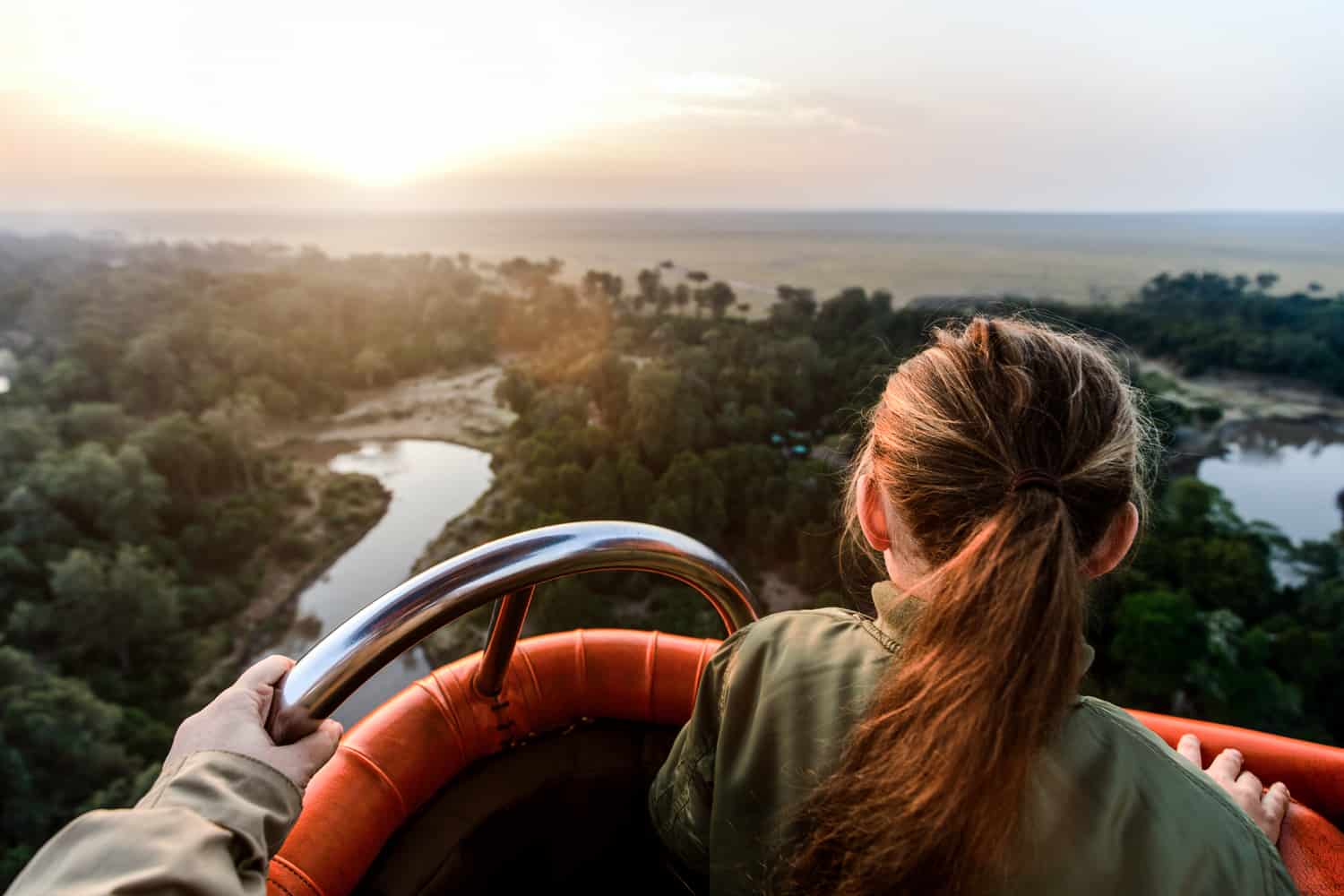
Hot air ballooning is not for the faint of heart. The tour takes you over the thick forests, water reservoirs and ancient ruins at the sunrise.
The hot air ballooning season is from November to April. This excursion is a lot more expensive than the other excursions listed in this article. At the time of writing this article, operators charge about USD 250 per person for this excursion. However, it is worth the price.
Note – Hot air ballooning is not recommended for children younger than 7 years old. It is also not recommended for pregnant women or persons with fear of heights (acrophobia).
Summary
I hope this article (Top then things to do in Sigiriya, Sri Lanka) helps you to make the most of your stay in Sigiriya. As you see there are so many great adventures waiting for you in Sigiriya. Make sure to include a couple of nights to Sigiriya, so you can enjoy some of these excursions during your holiday in Sri Lanka.
As always, feel free to leave a message, if you have any questions. If you would like to have our free itinerary consulting service get your tour itinerary planned, please drop us a message. We at Travellers Isle are looking forward to hearing from you.

